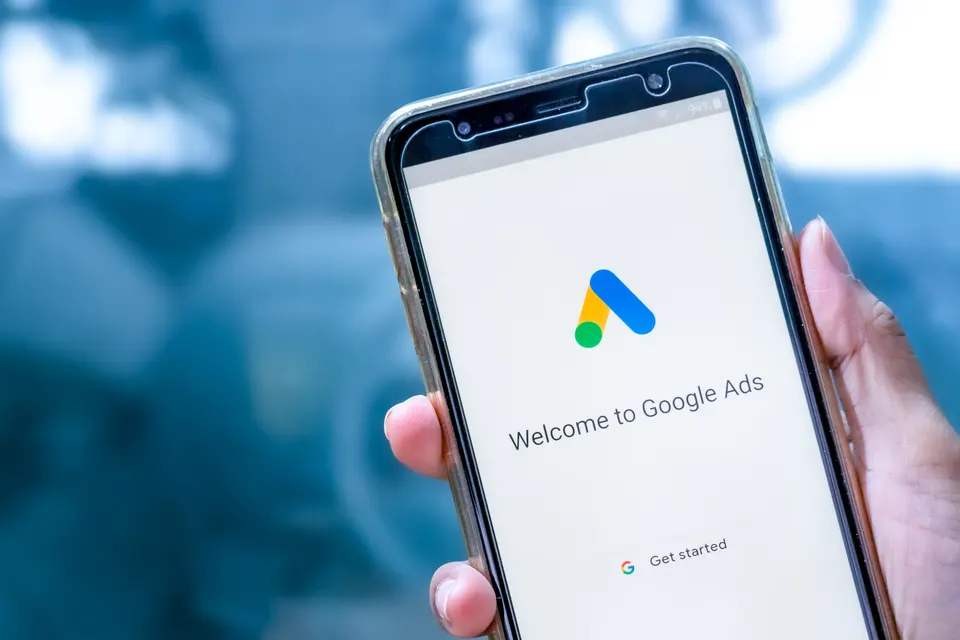In the ever-evolving landscape of digital marketing, mastering how to write Google Ad copy for PPC campaigns has become an essential skill for marketers and business owners alike. With over 3.5 billion Google searches performed daily and businesses spending more than $134.8 billion on Google Ads in 2022, the competition for attention in the paid search space is fiercer than ever.
Creating compelling ad copy isn’t just about stuffing keywords into limited character spaces – it’s an art form that requires strategic thinking, creativity, and a deep understanding of your target audience. Whether you’re a seasoned PPC professional or just starting your journey into paid advertising, crafting effective Google Ad copy can mean the difference between burning through your budget and achieving remarkable ROI.
Consider this: the average click-through rate (CTR) for Google Ads across all industries is 3.17%. However, well-crafted ad copy can push these numbers significantly higher, with top-performing ads achieving CTRs of 5-6% or more. This dramatic difference in performance often comes down to the quality and strategic implementation of your ad copy.

In this comprehensive guide, we’ll explore:
- Essential elements of high-performing Google Ad copy
- Step-by-step techniques for writing compelling headlines and descriptions
- Real-world examples of successful Google Ads across different industries
- Best practices for optimizing your ad copy for better conversion rates
- Common mistakes to avoid when creating PPC ad copy
What makes this guide different is our focus on practical, actionable examples that you can implement immediately. Instead of purely theoretical concepts, we’ll walk through real ad copy examples, breaking down why they work and how you can adapt these strategies for your own campaigns.
Understanding the fundamentals of Google Ad copy is crucial because your ads are often the first point of contact between your business and potential customers. In the split second it takes for someone to scan search results, your ad copy needs to:
- Capture attention in a crowded digital space
- Communicate value proposition clearly and concisely
- Trigger an emotional or logical response that compels action
- Meet Google’s advertising guidelines while maintaining effectiveness
As we dive deeper into this guide, you’ll discover that writing effective Google Ad copy is both a science and an art. We’ll explore how to balance creativity with data-driven decisions, and how to craft messages that not only attract clicks but also convert prospects into customers.
Whether you’re looking to improve your existing campaigns or starting fresh with PPC advertising, this guide will equip you with the knowledge and tools needed to create Google Ads that deliver results. Let’s begin by examining the core components of successful ad copy and how to optimize each element for maximum impact.

Key Points for Writing Effective Google Ad Copy
Creating compelling Google Ad copy for PPC campaigns requires a strategic approach and attention to detail. Let’s dive into the essential elements that will help you craft ads that drive clicks and conversions.
Table of Contents
Character Limits and Structure
Before diving into writing, it’s crucial to understand Google Ads’ character limitations:
- Headlines: Up to 3 headlines, each with 30 characters maximum
- Descriptions: Up to 2 descriptions, each with 90 characters maximum
- Display URL: Up to 2 path fields, each with 15 characters maximum
Working within these constraints while maintaining your message’s impact is essential for success in PPC advertising.
Essential Components of Effective Ad Copy
1. Compelling Headlines
Your headlines should immediately grab attention and communicate value. For example:
- “70% Off Designer Shoes” – Shows clear value proposition
- “24-Hour Emergency Plumber” – Addresses immediate needs
- “Free Shipping | Next Day Delivery” – Highlights key benefits
2. Clear Value Proposition
Every ad should clearly communicate what makes your offering unique:
- Highlight specific benefits or features
- Include pricing or promotional information when relevant
- Emphasize what sets you apart from competitors
3. Call-to-Action (CTA)
Strong CTAs drive user action. Examples include:
- “Shop Now” for e-commerce
- “Book Your Free Consultation” for services
- “Get Your Quote Today” for insurance
4. Keywords Integration
Strategic keyword placement improves ad relevance and Quality Score:
- Include primary keywords in at least one headline
- Use keywords naturally in descriptions
- Incorporate keywords in display URL paths
5. Trust Signals and Social Proof
Build credibility with elements such as:
- Awards and certifications
- Years in business
- Number of satisfied customers
- Ratings and reviews
Best Practices for Implementation
To maximize your ad’s effectiveness:
- Test multiple ad variations to identify top performers
- Use ad customizers for personalized messaging
- Implement responsive search ads for better reach
- Monitor performance metrics regularly
- Update ad copy based on performance data
Remember, successful Google Ad copy combines these elements while maintaining relevance to your target audience’s search intent. By following these key points and continuously optimizing your approach, you’ll be well-positioned to create PPC ads that deliver results.
When implementing these strategies, always keep your specific industry and target audience in mind, as what works in one sector may not be as effective in another. Regular testing and refinement of your ad copy will help you determine the most effective approach for your particular situation.

Best Practices for Writing Effective Google Ad Copy
Creating compelling Google Ad copy for PPC campaigns requires a strategic approach and attention to detail. Let’s dive into the proven best practices that will help you craft ads that not only capture attention but also drive conversions.
Follow the Character Limits Religiously
When learning how to write Google ad copy for PPC campaigns, understanding and adhering to character limits is crucial:
- Headlines (up to 3): 30 characters each
- Descriptions (up to 2): 90 characters each
- Path fields (up to 2): 15 characters each
Always use all available fields to maximize your ad’s visibility and impact. Remember that mobile devices might display fewer characters, so put your most important message first.
Implement Strong Calls-to-Action (CTAs)
Your ad copy should always include clear, compelling CTAs that create urgency and drive action. Some effective examples include:
- “Shop Now and Save 20%”
- “Get Your Free Quote Today”
- “Limited Time Offer – Book Now”
- “Start Your Free Trial”
Leverage Keywords Strategically
Always include your target keyword in at least one headline and, if possible, in the description. This helps improve your Quality Score and makes your ad more relevant to searchers. For example:
Original keyword: “custom wedding invitations”
Headline 1: “Custom Wedding Invitations”
Headline 2: “Unique Designs | Fast Delivery”
Headline 3: “50% Off First Order”
Focus on Benefits, Not Just Features
Transform features into benefits that resonate with your audience:
- Instead of: “24/7 Customer Support”
Write: “Get Help Anytime, Day or Night” - Instead of: “Cloud-Based Software”
Write: “Access Your Data Anywhere, Anytime”
Use Numbers and Statistics
Including specific numbers can significantly boost click-through rates:
- Pricing information: “Starting at $99”
- Discounts: “Save 30% Today”
- Social proof: “Trusted by 10,000+ Customers”
- Time-based offers: “2-Day Delivery”
Test Multiple Ad Variations
Create at least 3-4 ad variations per ad group to test different approaches:
- Different value propositions
- Various CTAs
- Alternative headline structures
- Different benefit highlights
Monitor performance metrics and optimize based on data, not assumptions. Regular testing and refinement are crucial for maintaining competitive PPC campaigns.
Remember to update your ad copy regularly to keep it fresh and relevant to current market conditions and seasonal changes. By following these best practices consistently, you’ll be well on your way to creating high-performing Google Ads that deliver results.
Always ensure your ad copy aligns with your landing page content to maintain a consistent user experience and improve your Quality Score. This attention to detail will help maximize your ad’s effectiveness while minimizing your cost per click.

Conclusion
Mastering the art of writing effective Google Ad copy for PPC campaigns is a crucial skill that can significantly impact your digital marketing success. Throughout this guide, we’ve explored various strategies and best practices that can help you create compelling ads that drive clicks, conversions, and ultimately, revenue.
Let’s recap the key takeaways for creating successful Google Ad copy:
- Research and Understanding – Always begin with thorough keyword research and a deep understanding of your target audience’s needs, pain points, and search intent.
- Compelling Headlines – Craft attention-grabbing headlines that incorporate your primary keywords while addressing user intent and highlighting your unique value proposition.
- Clear Value Proposition – Clearly communicate what sets your product or service apart from competitors and why potential customers should choose you.
- Call-to-Action (CTA) – Include strong, action-oriented CTAs that create urgency and guide users toward the desired action.
- Ad Extensions – Leverage various ad extensions to provide additional information and increase your ad’s visibility and click-through rates.
Remember that writing Google Ad copy is not a one-time task but an ongoing process of testing, analyzing, and optimization. Some best practices to maintain success include:
- Regularly A/B testing different ad variations to identify what resonates best with your audience
- Monitoring key metrics such as click-through rates, conversion rates, and quality scores
- Staying updated with Google Ads’ latest features and requirements
- Maintaining consistency between your ad copy and landing pages
- Continuously refining your targeting and bidding strategies
As you implement these strategies for writing Google Ad copy for PPC campaigns, remember that success often comes from finding the right balance between creativity and technical optimization. Don’t be afraid to experiment with different approaches while staying within Google’s guidelines and best practices.
Taking Action
To get started with implementing these strategies, we recommend:
- Creating a structured template for your ad copy development process
- Building a swipe file of successful ad examples from your industry
- Developing a testing calendar to systematically improve your ads
- Setting up tracking and reporting systems to measure success
- Regularly reviewing and updating your ad copy based on performance data
By following these guidelines and continuously refining your approach, you’ll be well-equipped to create Google Ad copy that not only attracts clicks but also drives meaningful conversions for your business. Remember that the most successful PPC campaigns are those that evolve and improve over time through careful attention to data and user response.
Now that you have a comprehensive understanding of how to write Google Ad copy for PPC campaigns, it’s time to put these principles into practice. Start by reviewing your existing ads and implementing these strategies one step at a time. With patience, persistence, and continuous optimization, you’ll be well on your way to PPC success.
